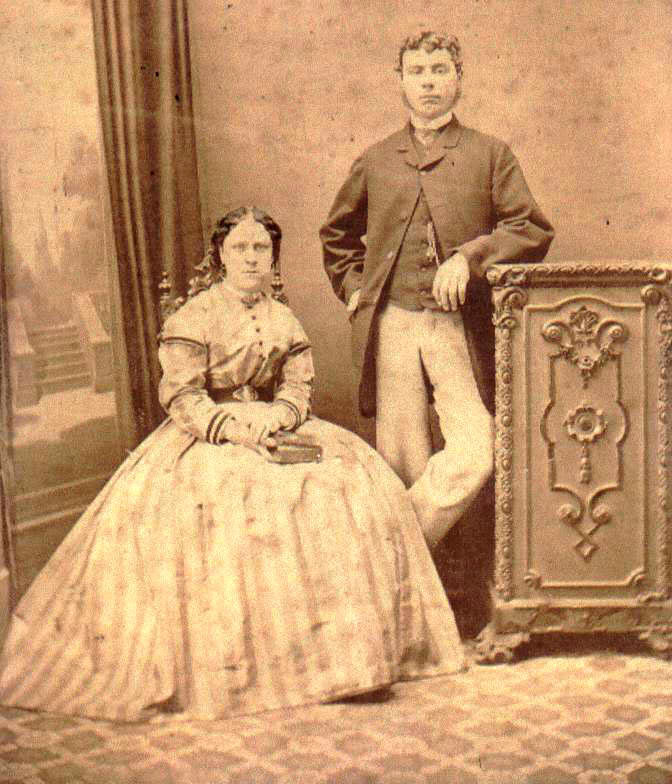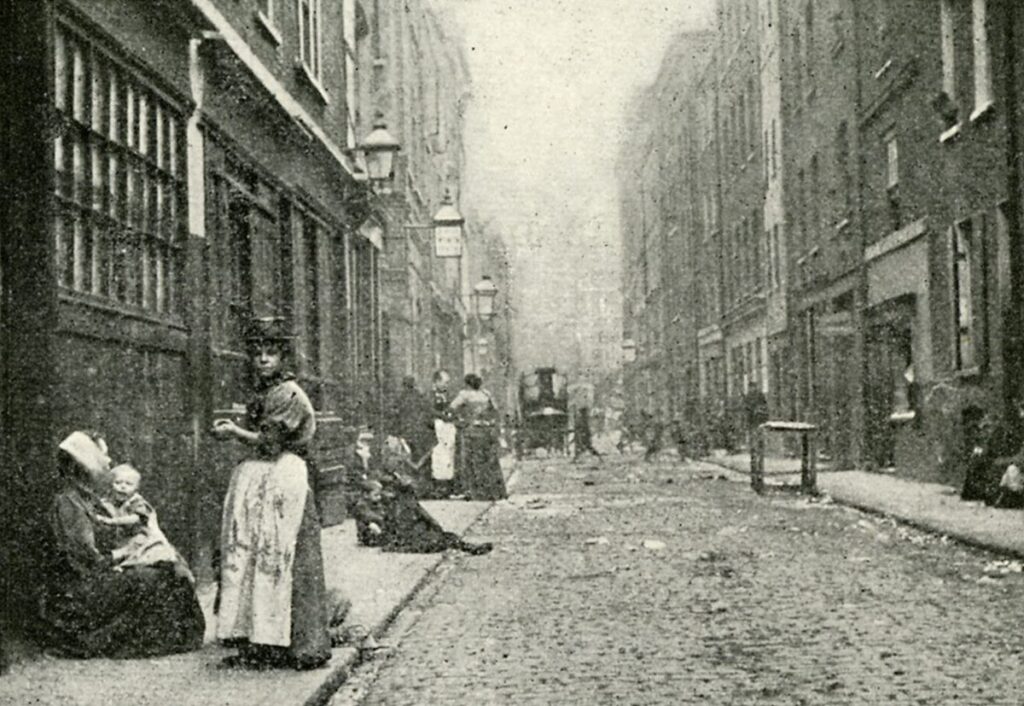At the last QED event, I hosted a panel session on True Crime. While the genre enjoys a large and enthusiastic following, social media and popular crime podcasts like Serial have, for some audiences, shifted it from purely educational or entertaining content into something more participatory. This can result in amateur investigators interfering with ongoing investigations, harassing victims’ families, or spreading unsubstantiated and conspiracy-laden claims.
In that session, we briefly discussed the transformation of Jack the Ripper into a folk anti-hero, citing his frequent appearances in popular culture. He has been pitted against Sherlock Holmes for various comics, films, and novels. He was eaten by a prehistoric reptile (off-screen) in Doctor Who. Hammer films portrayed him as a gender-swapping Jekyll and Hyde, and Star Trek as an alien entity named Redjac who feeds on fear.
Immediately after this panel, I was approached and appropriately admonished by Dr Brooke Magnanti for my use of the term ‘prostitutes’ during the discussion. Of course, Dr Magnanti was quite correct, and it’s a term I strive to avoid. The term ‘prostitute’ has centuries of accumulated moral judgment and dehumanising connotations, and is often used as an insult or slur. I had slipped up at one point while presenting, and I thanked her for the correction.
In the context of Jack the Ripper, the term can also be used to minimise or sideline the fact that his victims were real people, with real lives. People who laughed and loved, who had families, hopes, and individual stories. All too often, when the story of the Whitechapel Murders is told, his victims aren’t even named. They are merely dismissed as ‘prostitutes’ without further detail, as if that somehow lessens the horror of the crime.
However, while the idea that Jack the Ripper exclusively attacked sex workers is entrenched in the public imagination, the evidence supporting it turns out to be remarkably thin. Despite uncritically appearing in museum displays, documentaries, podcasts, and partworks, most of his victims were probably not engaged in sex work.
No-one knows for sure how many women were murdered by Jack the Ripper, but historians generally agree on at least five known victims: Mary Ann ‘Polly’ Nichols, Annie Chapman, Elisabeth Stride, Catherine ‘Kate’ Eddowes, and Mary Jane Kelly. Of those canonical five, while all of them were desperately poor, and frequently homeless, only Mary Jane Kelly can be unambiguously described as a sex worker. For the other four, the label seems to have been applied because of Victorian-era assumptions about any woman who was poor, out late at night, or cohabiting with a man outside of marriage.
So if we are to put aside imperial-era moral judgements, what does the historical record tell us?
Polly Nichols was born on August 26th 1845, to Caroline and Edward Walker. In 1864, aged 18, she was married to William Nichols at a ceremony at Saint Bride’s Parish Church in the City of London. The pair welcomed five children, but separated in 1880 with William citing Polly’s alcoholism as the reason for their split.
Following their separation, Polly went to the workhouse at Lambeth (a common story for the impoverished working class) and was employed part time as a charwoman, or cleaner. Her estranged husband was legally required to pay her an allowance, which he did until 1882 when the payments stopped. After Polly petitioned to have her allowance reinstated, William is reported to have claimed his wife was earning money illicitly through sex work. The evidence he offered was that she was now living with another man. Victorian courts accepted cohabitation outside marriage as proof enough, regardless of whether sex was actually exchanged for money, and he was freed of his obligation to pay.
In fact, there is no contemporary documentation to support his claim. Workhouse and employment records consistently list her as a charwoman, never as a sex worker. Surviving criminal records indicate that she may have been arrested for vagrancy in 1887, but nothing indicates she was earning money through sex work.
At the inquest into her murder, her father told the coroner that she was not a ‘fast’ woman (an archaic term used to mean sex worker or even just to indicate promiscuity). Questioned directly, he responded ‘I never heard anything of that sort’ and denied hearing of ‘anything improper’.
The only contemporary suggestion that Polly Nichols was a sex worker came from her husband, when disputing his maintenance payments. The other surviving records from 1888 describe an impoverished woman working intermittently in domestic service, staying in workhouses or sleeping rough, and struggling with alcohol abuse.
The life of Annie Chapman follows a similar trajectory. She was born Eliza Ann Smith on September 25th 1840, the first of five children born to Ruth Chapman and George Smith. She was married in 1869, to John Chapman, at All Saints Church in Knightsbridge.

Like Polly, Annie struggled with alcohol abuse, and she separated from John in 1884. John moved to Windsor, but Annie relocated to Whitechapel where she survived on John’s maintenance payments. The payments stopped when John died in 1886, and Annie began selling crochet work and small items such as matches and flowers to make ends meet. While she was arrested several times, it was for drunkenness, never solicitation.
At the inquest, there was no indication that Annie routinely sold sex, but the evidence could be read as indicating she occasionally resorted to sex work to secure a bed for the night – an act of desperation, not an occupation. It’s a subtle distinction, which is just as likely to be overlooked today as it was by Victorian observers. But Annie is certainly not the only impoverished woman – then or now – to have had opportunistic sex with a man just to ensure there was a roof over her head for one more night.
On the night of her murder, Annie was reported to have commented that she must ‘get some money for her bed’ as she left the lodging, a comment which has been cited in support of the claim that she was going out to solicit sex. However, no witness on the night of her murder described Annie as soliciting, and the comment indicates only that she needed to obtain money – a mere 4d.
In contrast to Annie and Polly, we know that the third victim, Elisabeth Stride, did have a historic connection with sex work. Born in Sweden in November 1843, ‘Long Liz’ (as she was known) was the second of four children born to Beata Carlsdotter and Gustaf Ericsson. In her early 20s, while living in Gothenburg, she was arrested for soliciting by Swedish authorities. At the time, she was unmarried and six months pregnant. The child was stillborn while she was in custody.
Following her relocation to London in 1866, she met John Thomas Stride (some twenty years her senior) and the pair married at St Giles in the Fields Church in 1869. After her relationship with John broke down in late 1881, she took up residence in a lodging house in Whitechapel. John died less than three years later, aged 63.
It was in the immediate aftermath of John’s death that Liz had her only recorded arrest for solicitation since leaving Sweden. On November 13th 1884, she was arrested for being drunk and disorderly, and for solicitation, for which she was given seven days hard labour. Whether she was actually soliciting for sex, or was simply accused of such, is something we’ll never know.
Her lodging house deputy described Liz as ‘quiet’ and ‘sober’ to the coroner, and said she was paid sixpence for cleaning rooms at the house. Michael Kidney, her partner at the time of her death, made no mention of her engaging in sex work in his evidence. The only ambiguous phrase comes from a witness who reportedly heard her say to a man, ‘not tonight, but some other night’ – a statement which is open to interpretation but hardly conclusive. If Elisabeth ever did return to occasional sex work, there is no record of it in the years leading up to her murder.
Ripperologists routinely describe Catherine Eddowes as a sex worker, but surviving records flatly contradict that. Catherine, or Kate, was born in Wolverhampton on April 14th 1842, the sixth of twelve children born to Catherine and George Eddowes. She was orphaned at age 15, and was shortly afterward admitted to the Bermondsey workhouse.
Unlike Polly, Annie, and Liz, Kate never married but did have a long term relationship with Thomas Conway, with whom she had three children. According to their daughter, Annie Philips, Thomas and Kate’s relationship became strained largely due to Kate’s alcohol abuse. They separated in 1880 or 1881.
Kate was arrested several times between 1877 and 1888, always for drunkenness, never for solicitation. Each time, her occupation was recorded as ‘laundress’ or ‘hawker’.
Witnesses at her inquest explicitly denied that she sold sex. John Kelly, her partner of seven years, told the coroner ‘I never knew her to go out for any immoral purpose’. When he said she sometimes had to ‘walk the streets’, he then clarified that he meant literally walking because they could not afford lodging.
The lodging house deputy testified that Kate made a living by hawking and cleaning, and ‘I never knew her to be intimate with any particular individual except Kelly’. None of her personal belongings or workhouse records suggest sex work. If any contemporary evidence existed to the contrary, it has not surfaced in 137 years.
The sole concrete exception is the final of Jack the Ripper’s victims, Mary Jane Kelly. Unlike the other victims, little is known about Mary’s early life, and the stories she is reported to have told are unverified or unverifiable. She told one partner that she was born in Ireland and moved to Wales when she was young. She said she married a coal miner when she was only 16, but following his death in a mining accident, moved to Cardiff to live with a cousin. It was during her time in Cardiff that she likely started sex work.
Mary relocated to London in 1884, reportedly securing work in a high-class brothel in the West End, and adopting the name Marie Jeanette. As with the other details of her early life, this too is unverified.
From his testimony at the inquest, we can be confident that Mary met Joseph Barnett on Good Friday in 1887 and they moved in together almost immediately. They lived at various lodgings around Spitalfields, finally settling in Miller’s Court off Dorset Street (reportedly, the ‘worst street in London’).

The relationship began deteriorating in the summer of 1888. In July, Joseph lost his job and Mary returned to sex work to support them both. They separated in October 1888, just weeks before her murder, following an ongoing dispute around Mary allowing other sex workers to stay with them on cold nights.
Her friend Lizzie Albrook later told reporters that Mary was ‘heartily sick of the life she was leading’ and desperately wanted to return to Ireland. Albrook told the press ‘I don’t believe she would have gone out as she did if she had not been obliged to do so to keep herself from starvation’. By the time of her death, Mary Jane Kelly was drowning in debt, drinking heavily, and dependent on selling sex to survive.
The factor which unites each of these women is not sex work, but poverty. Victorian society often conflated poverty with sexual immorality, and official records used euphemisms like ‘fast woman’ or ‘irregular life’, which allowed moral judgment to pose as a neutral description. To a late-Victorian coroner, a woman living in a lodging house, cohabiting without marriage, or found drunk in the street was of immoral character by definition. And once those early accounts had framed the victims as sex workers, later writers repeated it without re-examining the evidence.
Modern scholarship has only just begun to unravel these inherited assumptions. Historians, notably Hallie Rubenhold, have pointed out that the evidence for the victims engaging in routine sex work simply does not exist. A few may have exchanged sex for money or shelter at times of acute need – what might be termed ‘survival sex’ today – but the distinction between that and professional sex work was blurred by Victorian moralism and later lost altogether.
All that said, nothing I’ve written here should be taken as denigrating sex work or sex workers. Even if each of these women was routinely and enthusiastically engaged in sex work, that does not mean they were any more deserving of what happened. But in reclaiming their stories, we can remind ourselves that these women were more than simply an occupation. They were real people, struggling to survive, in a society which had defined them by its prejudices.



